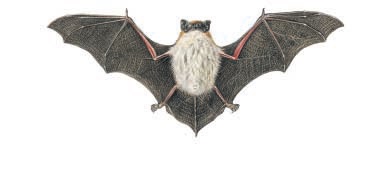The Savi’s bat is small with a head-body length of 4-5 cm and a wingspan of 22-25 cm. The weight varies between 5 and 10 grams. The coat has a variable colour from brown-yellowish in the upper parts and yellowish-white or whitish-grey in the lower parts.
It can be found in various environmental types, including urban areas, from the lowland up to 2.000m of altitude.
It has a slow, straight flight, interspersed with short glides. It is almost certainly sedentary but like the other species of Chiroptera it makes movements between the summer and winter shelters.
It shelters mainly among the interstices of the rocky walls but has been observed also in hollows of trees and under raised barks. In buildings it uses the cracks of the walls, the spaces behind the shutters and those between the tiles and the roof cladding.
It can hunt both at low height and several tens of meters from the ground. It preys on small flying insects. It can be observed in foraging at streetlights.
The species mates in August-September; ovulation and fertilization take place in the spring after mating.
The reproductive colonies may contain up to 70 females. The births take place in June-July and are usually twin.
The Savi’s bat emits social signals that are audible; they are used to communicate between young and adults and between males and females.
The threats to the species are pollution and disturbance of the colonies. The Savi’s bat is a species of Community interest according to the Habitats Directive 92/43/EEC.

